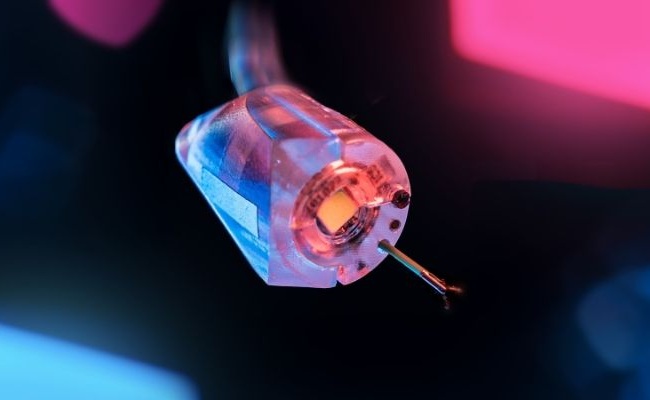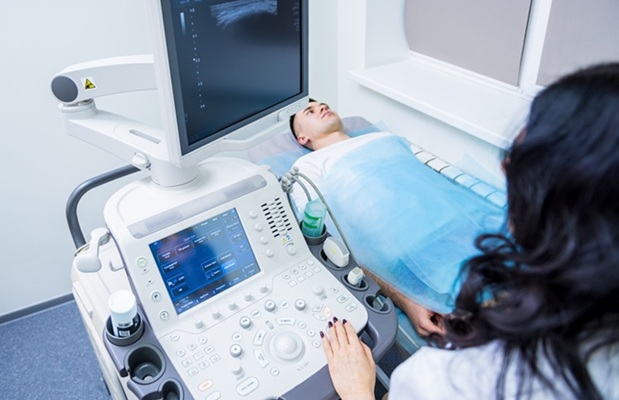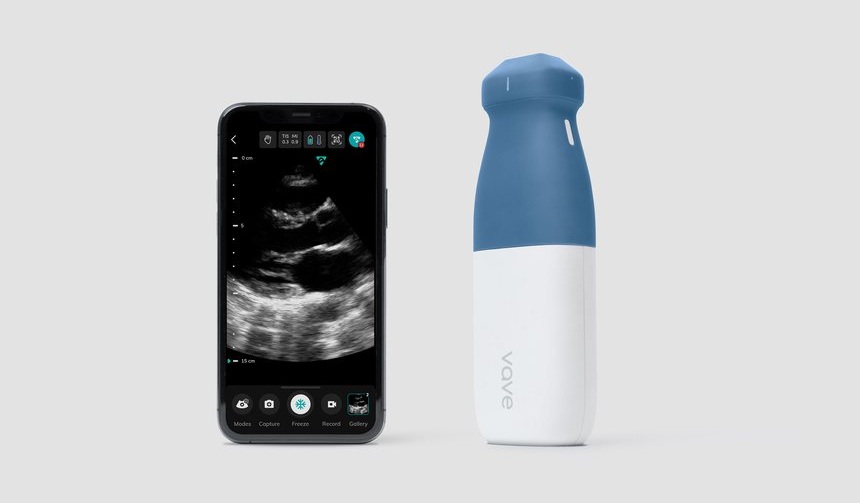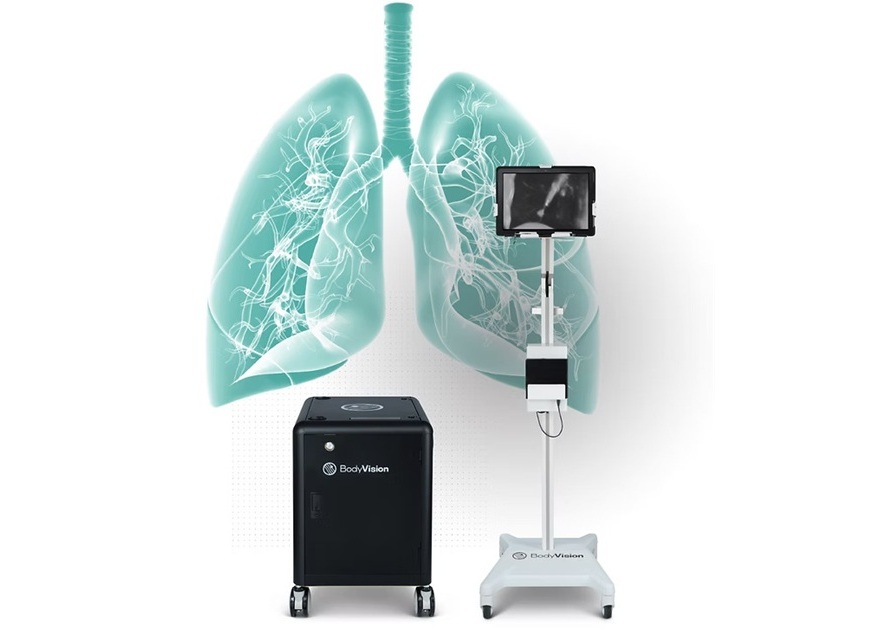Vegetable Compound Found to Protect Against Radiation
|
By MedImaging International staff writers Posted on 28 Oct 2013 |
Researchers have reported that a compound found in cruciferous vegetable such as cauliflower, cabbage, and broccoli shields rats and mice from lethal doses of radiation.
Their study, published October 15, 2013, in the journal Proceedings of the National Academy of Sciences of the United States of America (PNAS) suggests the compound, already demonstrated to be safe for humans, may protect healthy tissues during radiotherapy for cancer treatment and prevent or lessen sickness caused by radiation exposure.
The compound, known as DIM (3,3'-diindolylmethane), previously has been found to have cancer preventive properties. “DIM has been studied as a cancer prevention agent for years, but this is the first indication that DIM can also act as a radiation protector,” stated the study’s corresponding author, Eliot Rosen, MD, PhD, of Georgetown University Lombardi Comprehensive Cancer Center (Washington DC, USA).
The scientists irradiated rats in the study with lethal doses of gamma ray radiation. The animals were then treated with a daily injection of DIM for two weeks, starting 10 minutes after the radiation exposure. The result was amazing, according to Dr. Rosen, a professor of oncology, biochemistry, cell and molecular biology, and radiation medicine. “All of the untreated rats died, but well over half of the DIM-treated animals remained alive 30 days after the radiation exposure.”
Dr. Rosen added that DIM also provided protection whether the first injection was administered 24 hours before or up to 24 hours after radiation exposure. “We also showed that DIM protects the survival of lethally irradiated mice,” Dr. Rosen said. Furthermore, irradiated mice treated with DIM had less reduction in red blood cells, white blood cells and platelets—side effects often seen in patients undergoing radiation treatment for cancer.
Dr. Rosen noted that this study revealed two potential uses of the compound. “DIM could protect normal tissues in patients receiving radiation therapy for cancer, but could also protect individuals from the lethal consequences of a nuclear disaster.”
Rosen and study coauthors Saijun Fan, PhD, and Milton Brown, MD, PhD, are co-inventors on a patent application that has been filed by Georgetown University for the use of DIM and DIM-related compounds as radioprotectors.
Related Links:
Georgetown University Lombardi Comprehensive Cancer Center
Their study, published October 15, 2013, in the journal Proceedings of the National Academy of Sciences of the United States of America (PNAS) suggests the compound, already demonstrated to be safe for humans, may protect healthy tissues during radiotherapy for cancer treatment and prevent or lessen sickness caused by radiation exposure.
The compound, known as DIM (3,3'-diindolylmethane), previously has been found to have cancer preventive properties. “DIM has been studied as a cancer prevention agent for years, but this is the first indication that DIM can also act as a radiation protector,” stated the study’s corresponding author, Eliot Rosen, MD, PhD, of Georgetown University Lombardi Comprehensive Cancer Center (Washington DC, USA).
The scientists irradiated rats in the study with lethal doses of gamma ray radiation. The animals were then treated with a daily injection of DIM for two weeks, starting 10 minutes after the radiation exposure. The result was amazing, according to Dr. Rosen, a professor of oncology, biochemistry, cell and molecular biology, and radiation medicine. “All of the untreated rats died, but well over half of the DIM-treated animals remained alive 30 days after the radiation exposure.”
Dr. Rosen added that DIM also provided protection whether the first injection was administered 24 hours before or up to 24 hours after radiation exposure. “We also showed that DIM protects the survival of lethally irradiated mice,” Dr. Rosen said. Furthermore, irradiated mice treated with DIM had less reduction in red blood cells, white blood cells and platelets—side effects often seen in patients undergoing radiation treatment for cancer.
Dr. Rosen noted that this study revealed two potential uses of the compound. “DIM could protect normal tissues in patients receiving radiation therapy for cancer, but could also protect individuals from the lethal consequences of a nuclear disaster.”
Rosen and study coauthors Saijun Fan, PhD, and Milton Brown, MD, PhD, are co-inventors on a patent application that has been filed by Georgetown University for the use of DIM and DIM-related compounds as radioprotectors.
Related Links:
Georgetown University Lombardi Comprehensive Cancer Center
Latest Radiography News
- AI-Powered Imaging Technique Shows Promise in Evaluating Patients for PCI
- Higher Chest X-Ray Usage Catches Lung Cancer Earlier and Improves Survival
- AI-Powered Mammograms Predict Cardiovascular Risk
- Generative AI Model Significantly Reduces Chest X-Ray Reading Time
- AI-Powered Mammography Screening Boosts Cancer Detection in Single-Reader Settings
- Photon Counting Detectors Promise Fast Color X-Ray Images
- AI Can Flag Mammograms for Supplemental MRI
- 3D CT Imaging from Single X-Ray Projection Reduces Radiation Exposure
- AI Method Accurately Predicts Breast Cancer Risk by Analyzing Multiple Mammograms
- Printable Organic X-Ray Sensors Could Transform Treatment for Cancer Patients
- Highly Sensitive, Foldable Detector to Make X-Rays Safer
- Novel Breast Cancer Screening Technology Could Offer Superior Alternative to Mammogram
- Artificial Intelligence Accurately Predicts Breast Cancer Years Before Diagnosis
- AI-Powered Chest X-Ray Detects Pulmonary Nodules Three Years Before Lung Cancer Symptoms
- AI Model Identifies Vertebral Compression Fractures in Chest Radiographs
- Advanced 3D Mammography Detects More Breast Cancers
Channels
MRI
view channel
Ultra-Powerful MRI Scans Enable Life-Changing Surgery in Treatment-Resistant Epileptic Patients
Approximately 360,000 individuals in the UK suffer from focal epilepsy, a condition in which seizures spread from one part of the brain. Around a third of these patients experience persistent seizures... Read more
AI-Powered MRI Technology Improves Parkinson’s Diagnoses
Current research shows that the accuracy of diagnosing Parkinson’s disease typically ranges from 55% to 78% within the first five years of assessment. This is partly due to the similarities shared by Parkinson’s... Read more
Biparametric MRI Combined with AI Enhances Detection of Clinically Significant Prostate Cancer
Artificial intelligence (AI) technologies are transforming the way medical images are analyzed, offering unprecedented capabilities in quantitatively extracting features that go beyond traditional visual... Read more
First-Of-Its-Kind AI-Driven Brain Imaging Platform to Better Guide Stroke Treatment Options
Each year, approximately 800,000 people in the U.S. experience strokes, with marginalized and minoritized groups being disproportionately affected. Strokes vary in terms of size and location within the... Read moreUltrasound
view channel
Tiny Magnetic Robot Takes 3D Scans from Deep Within Body
Colorectal cancer ranks as one of the leading causes of cancer-related mortality worldwide. However, when detected early, it is highly treatable. Now, a new minimally invasive technique could significantly... Read more
High Resolution Ultrasound Speeds Up Prostate Cancer Diagnosis
Each year, approximately one million prostate cancer biopsies are conducted across Europe, with similar numbers in the USA and around 100,000 in Canada. Most of these biopsies are performed using MRI images... Read more
World's First Wireless, Handheld, Whole-Body Ultrasound with Single PZT Transducer Makes Imaging More Accessible
Ultrasound devices play a vital role in the medical field, routinely used to examine the body's internal tissues and structures. While advancements have steadily improved ultrasound image quality and processing... Read moreNuclear Medicine
view channel
Novel PET Imaging Approach Offers Never-Before-Seen View of Neuroinflammation
COX-2, an enzyme that plays a key role in brain inflammation, can be significantly upregulated by inflammatory stimuli and neuroexcitation. Researchers suggest that COX-2 density in the brain could serve... Read more
Novel Radiotracer Identifies Biomarker for Triple-Negative Breast Cancer
Triple-negative breast cancer (TNBC), which represents 15-20% of all breast cancer cases, is one of the most aggressive subtypes, with a five-year survival rate of about 40%. Due to its significant heterogeneity... Read moreGeneral/Advanced Imaging
view channel
AI-Powered Imaging System Improves Lung Cancer Diagnosis
Given the need to detect lung cancer at earlier stages, there is an increasing need for a definitive diagnostic pathway for patients with suspicious pulmonary nodules. However, obtaining tissue samples... Read more
AI Model Significantly Enhances Low-Dose CT Capabilities
Lung cancer remains one of the most challenging diseases, making early diagnosis vital for effective treatment. Fortunately, advancements in artificial intelligence (AI) are revolutionizing lung cancer... Read moreImaging IT
view channel
New Google Cloud Medical Imaging Suite Makes Imaging Healthcare Data More Accessible
Medical imaging is a critical tool used to diagnose patients, and there are billions of medical images scanned globally each year. Imaging data accounts for about 90% of all healthcare data1 and, until... Read more
Global AI in Medical Diagnostics Market to Be Driven by Demand for Image Recognition in Radiology
The global artificial intelligence (AI) in medical diagnostics market is expanding with early disease detection being one of its key applications and image recognition becoming a compelling consumer proposition... Read moreIndustry News
view channel
GE HealthCare and NVIDIA Collaboration to Reimagine Diagnostic Imaging
GE HealthCare (Chicago, IL, USA) has entered into a collaboration with NVIDIA (Santa Clara, CA, USA), expanding the existing relationship between the two companies to focus on pioneering innovation in... Read more
Patient-Specific 3D-Printed Phantoms Transform CT Imaging
New research has highlighted how anatomically precise, patient-specific 3D-printed phantoms are proving to be scalable, cost-effective, and efficient tools in the development of new CT scan algorithms... Read more
Siemens and Sectra Collaborate on Enhancing Radiology Workflows
Siemens Healthineers (Forchheim, Germany) and Sectra (Linköping, Sweden) have entered into a collaboration aimed at enhancing radiologists' diagnostic capabilities and, in turn, improving patient care... Read more

















